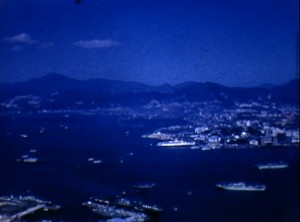
"Hansen travels to Hong Kong following his original visit to China in 1937. Initially, he spends much of his time roaming the commercial districts, giving a sense of tourism side of Hong Kong. Immediately following, he spends several minutes focusing on the skyline and captures footage of locations on the outskirts of the city. Hansen then spends the rest of the evening eating at a local cuisine and attending a show. For the remainder of his trip, Hansen shifts his attention from Hong Kong's tourist areas to the residential districts, fishing docks, and rural farming." UC San Diego Library.
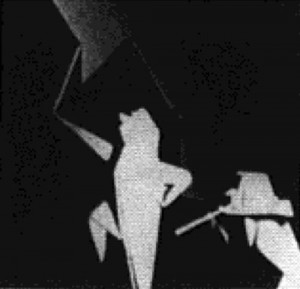
"Many forms of art originated in old Japan. Here is a demonstration of a unique and improbably one that began as entertainment for children. Origami, the art of paper folding, is charmingly portrayed and described in this very imaginative film. One of the Ten Best, it will be enjoyed in the 1963 Top of the Ten pack" PSA Journal, Oct. 1963, 40.
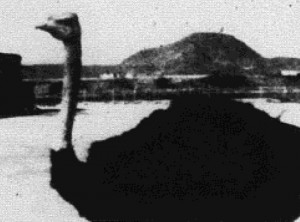
"The Ostrich Story by R. D. Charlton, a PSA member of Alexandra Headland, Queensland, Australia. Roy has many past winners to his credit and this film can only add to them with an unusual subject such as this. This 5-minute 8mm film was awarded an Honorable Mention" PSA Journal, Nov. 1971, 42.
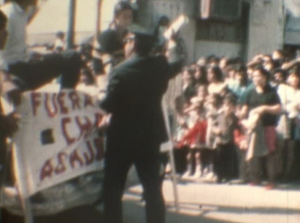
"En este cortometraje se narra la resistencia al régimen en la ciudad de Monterrey, en el estado de Nuevo León, a través de varios frentes: la irrupción de un grupo de sindicalistas independientes en el desfile oficial del 20 de noviembre, con la presencia del gobernador Luis M. Farías; la invasión de tierras y la presencia de organizaciones vecinales en Topo Chico; los muertos por un accidente laboral en la Fundidora Monterrey; las huelgas de obreros de la CTM y de panaderos de la CROC (dos poderosos sindicatos oficiales), o la actividad vecinal del Grupo 2 de Octubre en la colonia Días Ordaz" (Vázquez Mantecón, 2012).
"This short film tells the story of the resistance against the regime in Monterrey city, in the state of Nuevo León, through several perspectives: the irruption of a group of independent union laborers in the official November 20th parade, with the presence of governor Luis M. Farías; the invasion of land and the presence of neighborhood organizations in Topo Chico; the dead by a working accident in Fundidora Monterrey [Monterrey Foundry]; the strikes of CTM workers and CROC bakers (two powerful official labor unions), or the activities of neighbors of the October 2 Group in Diaz Ordaz vicinity" (Vázquez Mantecón, 2012).
"In the late 1931 through early 1932, a heated debate developed among several amateur filmmakers in the Kansai region over the question of inserting portions of existing films in an amateur film production. The debate emerged when a 9.5mm amateur production, Otsukai, was disqualified from an amateur film competition sponsored by a Kansai-based newspaper company, Osaka Mainichi Shimbun (Daimai), after the film had once been selected as one of the winners of the contest. As a representative of Daimai, Kitao Ryōnosuke, who was not only a journalist but also a small-gauge filmmaker himself, explained that the film was excluded from the competition because the author, Takeuchi Kichinosuke, did not notify Daimai in advance about the insertion of a portion of an existing work. According to Kitao, even though the use of existing films would not be considered a form of plagiarism, Otsukai violated the competition guideline, which declared that a submitted film “must be one’s own creation.... Takeuchi, after providing the details of how and why he employed part of a film by one of his friends named Tanaka Yoshitsugu, raised a question concerning how to interpret the idea of “one’s own creation.” Drawing upon Soviet filmmaker Vsevolod Pudovkin’s montage theory, Takeuchi insisted that “one’s own creation” in filmmaking stemmed most fundamentally from montage editing, rather than from other formal or stylistic components including shooting with a camera.” - Noriko Morisue, "Filming the Everyday: History, Theory, and Aesthetics of Amateur Cinema in Interwar and Wartime Japan" (Yale University: PhD Dissertation, 2020): 65-66.
"Coastal people, places and scenery between Vancouver Island and the mainland. Includes footage of Indian villages, pictographs, birds and wildlife, logging operations, other vessels, etc." British Columbia Archives.
"Cruise on Toketie. Coastal people, places and scenery between Vancouver Island and the mainland. Includes footage of Indian villages, pictographs, birds and wildlife, logging, other vessels, etc. Notably, there are good shots of the abandoned villages of Gwayasdums, Karlukwees, and Mamalilaculla, as well as the burial ground on Klaoitsis Island" British Columbia Archives.
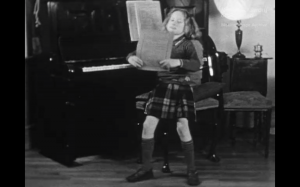
A story of a young boy and girl who play pranks on their maid as their Mother is away from the house.
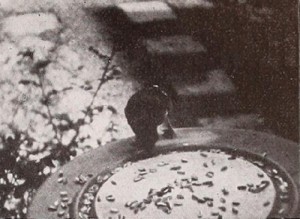
"Our Boisterous Bluejays is a remarkable study of bird life, filled with intimate shots that are among the best ornithologic cinematography on record. Mrs. Warner Seely, who produced this film, has become an expert at picturing birds in their natural habitat, and she shows the bluejay at every stage of development." Movie Makers, Dec. 1943, 478.
"Harriet Gerry shot this film during an automobile journey from Rosedale to Williams Lake and Soda Creek on the Cariboo Highway, and part of the return trip via the Dog Creek Road, in the summer of 1941" British Columbia Archives.
Total Pages: 203